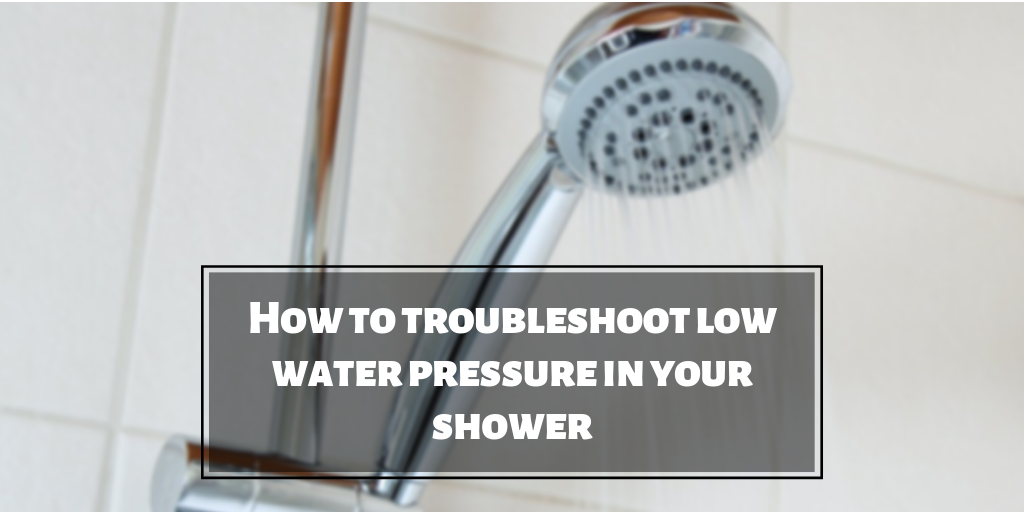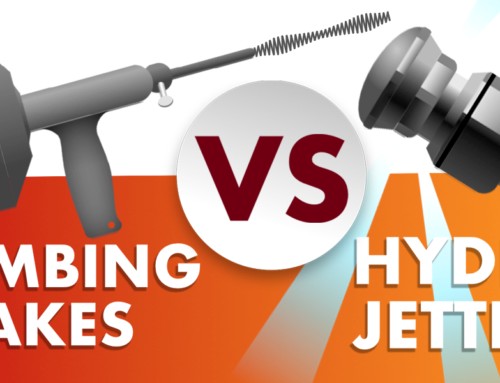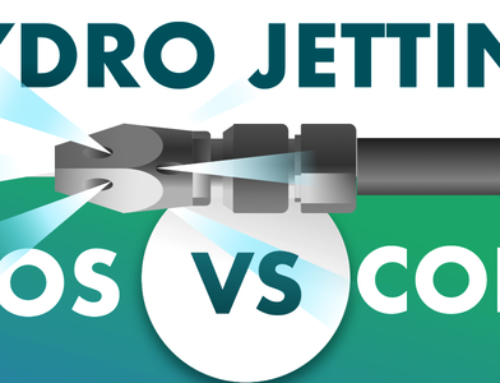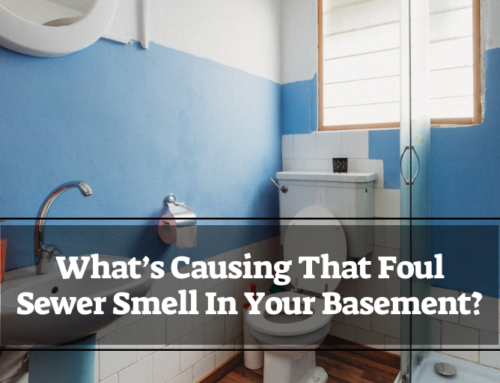Before we get into some of the reasons you might have low water pressure in your shower, let’s talk a bit about water pressure in general. It’s one of the things we take for granted. However, most people have no idea where it comes from or how it works.
Where does water pressure come from?
We get our water from a variety of sources including lakes, streams, rivers, groundwater, and reservoirs. The water is pumped from the source to treatment centers and then on to pressure tanks situated at high points around the community. If you’ve ever seen a water tower you’ve seen one of these tanks. The height of these tanks compared to the areas where the water will be distributed and the weight of the water (water is heavy!) is what creates the pressure.
This makes sense when you think about it…
Imagine a water tank at ground level. What would happen if you opened a valve and let the water run out? It would definitely leave the tank, but would it rush out suddenly with force? No. Depending on the size of the opening it would either dribble or pour out. Now imagine opening a valve at ground level connected to the tank on a tall water tower. In this case, the water would come gushing out because it has a long way to fall before it reaches the open valve. The water in Niagara Falls contains more pressure than the water in a quiet stream.
The movement of the water from these tanks to the water mains is what creates the pressure. Of course, the pressure can also be increased by pumps and this is what usually happens. The pumps help to keep the water pressure constant.
What should be the water pressure in residential homes?
The water pressure in your home is determined by a few different factors including the height of your building relative to the water tower, the location (and size) of the water main, how many houses are connected to the main, and the size of the pipe connecting your home to the main. (Older homes may not have a pipe big enough to handle today’s demand.)
The California Plumbing Code states that the water pressure must be “no less than 15 PSI and no more than 80 PSI”. However, that doesn’t mean you’ll be happy with water at 15 PSI (pounds per square inch). Anything under 30 PSI is considered low water pressure and pressure over 80 PSI is considered too high. Residential water pressure should be anywhere from 45 to 80 PSI.
Yes, low water pressure is annoying. However, water pressure that’s too high will damage your pipes.
So, with that out of the way, let’s find out what’s causing your shower’s low water pressure…
How to troubleshoot low water pressure in your shower
Step 1: Determine if the low water pressure is limited to your shower or if it’s present throughout your home.
You can do this by turning on various faucets and observing the pressure. If you notice the same low pressure everywhere…
Your main water shutoff valve might be partially closed.
Check to make sure that it’s fully open. It’s usually in the basement or on an outside wall.
If you’re not sure where your main shutoff valve is located this short, 2-minute video will help you out.
Your water pressure reducing valve might have a problem.
Water pressure reducing valves help regulate the water pressure coming into your home in order to protect your plumbing. If you have one of these valves installed you should contact a professional. They will be able to determine if it needs adjusting.
Your curb-side main might be partially closed.
If you’ve just moved into your home and noticed that the water pressure isn’t what it should be, it’s possible that your curb-side main was turned off at some point and then not completely turned on again. The curb-side main is the point where water enters your home from the main line.
If you know what you’re doing, you can check to make sure this valve is fully open. However, if you have a single-valve meter, you will need a special tool.
A word of caution…
If you aren’t supposed to be messing with these meters, contact a professional.
Note: If the pressure problem is limited to the hot water, the problem is related to your hot water heater.
Step 2: If you determine that the low pressure is limited to the shower…
Ok, so you’ve determined that your low water pressure is indeed limited to your shower. Now it’s time to start exploring some possible causes…
- You have a clogged showerhead.
The water coming into your home contains minerals and over time deposits can build up and clog the showerhead. Remove the showerhead, soak it in white vinegar for a few hours, and then use a brush to scrub away any mineral deposits.
If your showerhead is in really bad shape you might need to replace it.
- You’re using an old, low-flow showerhead.
If you’re using an older, low-flow showerhead, upgrade to a newer one that provides more pressure.
- There’s a problem with the volume control on your single control shower.
There could be a problem with the part of your single control shower that controls the volume pressure. If so, you’ll need to contact a professional as these are not easy to fix.
- Your in-line shutoff valve is only partially open.
If your home has in-line shutoff valves, one of them could be partially closed. These are located on branch lines leading to various parts of your house including the bathroom, kitchen, laundry room, etc.
They come in handy when you only want to shut off the water to a certain part of your house. For example, maybe you’re doing some repair work in your kitchen. So, if you have in-line shutoff valves installed, you’ll find one on the pipes leading to the shower. Turn the valve counter-clockwise for full pressure.
- You have a leak or a problem with mineral build up in your water line.
In this case, you’ll definitely need to call a professional. Water leaks can damage your home and end up costing you a lot of money.
A simple test to determine if you have low water pressure in your shower…
Here’s a simple test to determine if you truly have a problem with low water pressure. You’ll need…
- A 5-gallon bucket
- A stopwatch or timer (Your smartphone probably has one. If not, you can find free apps to download.)
What we’re going to do is measure gallons per minute (GPM).
Step 1: Remove the showerhead so that you can get a stream of water going straight into the bucket instead of spraying everywhere. This will give you a more accurate reading.
Step 2:
- Turn the water on all the way and let it run for 30 seconds to one minute.
- Now put your 5-gallon bucket under the flow and start timing immediately. Stop timing when the bucket overflows.
- If you’ve been timing the water in minutes, multiply by 60 to convert them to seconds. For example, 5 minutes x 60 = 300 seconds.
- Now, divide the seconds by 5. For example, 300/5 = 60 seconds or one minute. If it takes a minute to fill a 5-gallon bucket your shower pressure is 1 GPM. This is considered low pressure. Here are some standards…
1.5 GPM – This is the pressure when a showerhead has a device installed to restrict the flow.
2 GPM – The EPA’s WaterSense standard.
2.5 GPM – The US standard in 1992.
5 GPM – The shower flow rate before 1980.
We’re Sewer Pros, a licensed and insured sewer repair and replacement contractor doing business in Los Angeles and Orange County and qualified to do trenchless work. Contact us today at (310) 564-2627 to find out how we can save you both time and money!








Leave A Comment